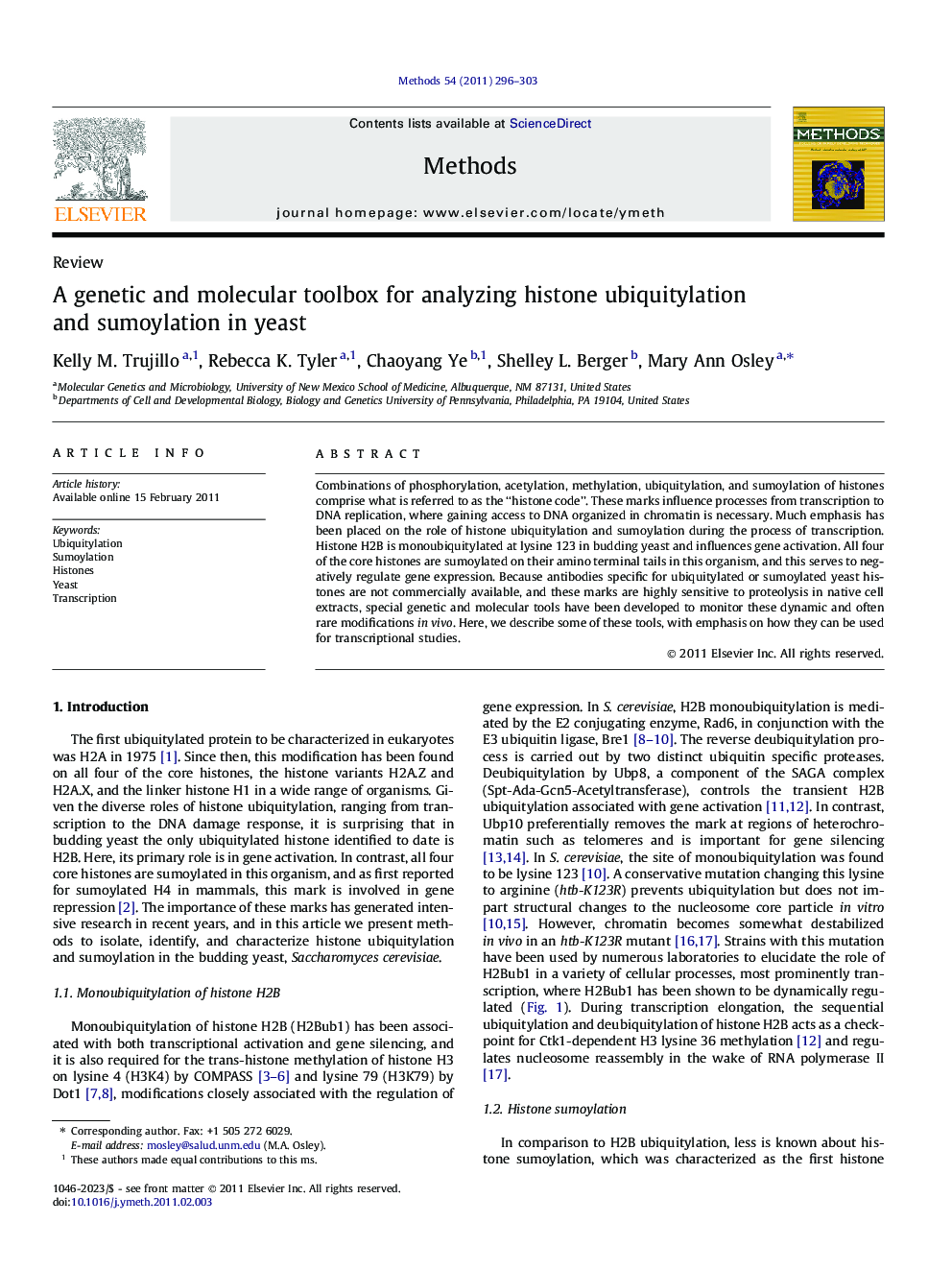| Article ID | Journal | Published Year | Pages | File Type |
|---|---|---|---|---|
| 1994117 | Methods | 2011 | 8 Pages |
Combinations of phosphorylation, acetylation, methylation, ubiquitylation, and sumoylation of histones comprise what is referred to as the “histone code”. These marks influence processes from transcription to DNA replication, where gaining access to DNA organized in chromatin is necessary. Much emphasis has been placed on the role of histone ubiquitylation and sumoylation during the process of transcription. Histone H2B is monoubiquitylated at lysine 123 in budding yeast and influences gene activation. All four of the core histones are sumoylated on their amino terminal tails in this organism, and this serves to negatively regulate gene expression. Because antibodies specific for ubiquitylated or sumoylated yeast histones are not commercially available, and these marks are highly sensitive to proteolysis in native cell extracts, special genetic and molecular tools have been developed to monitor these dynamic and often rare modifications in vivo. Here, we describe some of these tools, with emphasis on how they can be used for transcriptional studies.
